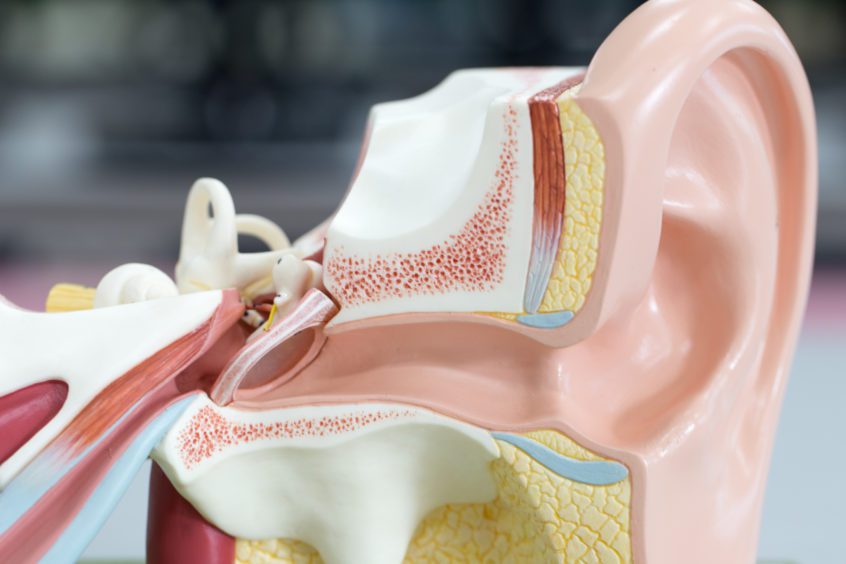From the time you were old enough to bathe on your own, your parents probably taught you that an important part of hygiene is keeping your ears clean. But did they teach you the correct way to clean your ears? And what happens if you don’t clean them? Is there really any danger to a build-up of excess earwax?
Let’s start with the basics. Everyone has earwax, better known in the medical world as cerumen. Believe it or not, earwax serves an important purpose. The glands inside your ear canals secrete the substance, and it looks different for different individuals. For most, it’s yellowish or honey-colored, or sometimes grayish, and it can be sticky or dry.
Its job is to protect your outer ear and ear canal, trapping dust and dirt, and keeping debris from traveling down your ear canal. It also can stop unhealthy bacteria from growing in the ear.
Unfortunately, you can have too much of a good thing—some people’s bodies just produce more earwax than others. Plus, some medications, exercise or stress can cause your body to make more earwax. Your body also produces more earwax as you get older, and some individuals who wear hearing aids may produce more earwax.
Removing Earwax the Natural Way
Often, earwax comes out all by itself. Old earwax is constantly being transported out of the ear canal to the ear opening. Chewing and jaw motion assist with this natural cleaning process. Once the wax reaches the outer ear, it dries, flakes, and falls out.
But several generations have been taught keeping our ears clean requires some extra help in the form of cotton swabs. Audiologists agree using cotton swabs to clean the ear canal is not a good idea. They can push the wax further and further into the ear canal, rather than removing it.
Instead, just use a warm, moist wash cloth to clean the outside of your ears. NEVER put anything in the ear canal, especially sharp objects, like toothpicks or hair pins. Not only can you push the ear wax further into the canal, but you could potentially damage the eardrum. Also, NEVER use ear candles or “candling” to try to remove earwax. The Food and Drug Administration has issued safety warnings regarding this home remedy and it could result in a serious injury. Many of the “as seen on TV” options for wax removal are not recommended and in some cases are not safe.
For Stubborn Earwax…
Fortunately, most cases of ear wax blockage respond to conventional home treatments used to soften wax. You can try placing a few drops of mineral oil, baby oil, glycerin, or commercial drops in the ear. Detergent drops such as hydrogen peroxide or carbamide peroxide (available in most pharmacies) may also aid in the removal of wax. Some of these remedies can inadvertently irritate the sensitive skin of the ear canal.
Though it’s not common, if you have impacted ear wax that’s close to your eardrum, it could affect your hearing and cause temporary hearing loss or dizziness. Audiologists and doctors call this impacted earwax. How can you tell if you have impacted earwax?
Symptoms may include:
- Earache
- Feeling of plugged hearing or fullness in the ear
- Partial hearing loss that gets worse
- Tinnitus, ringing, or noises in the ear
- Itching, odor, or discharge
- Coughing
- Pain
- Infection
If you have any of the symptoms above, check with your audiologist or doctor to see if you might have excess or impacted earwax.
You might need an audiologist or medical professional to inspect your ear canals and, if necessary, either remove the earwax by washing it out, or manually remove the earwax using suction or special miniature instruments.
Manual wax removal is preferred if your ear canal is narrow, the eardrum has a perforation or tube, other methods have failed, or if you have skin problems affecting the ear canal, diabetes or a weakened immune system.
Remember, never put any objects, even cotton swabs, in your ears. You risk pushing the wax further down your ear canal and causing a bigger problem.
If you are prone to repeated wax impaction or use hearing aids, consider seeing your audiologist every six to 12 months for a check-up and routine preventive cleaning. In addition, audiologists carry special products and solutions for cerumen management that are safe and specific for self use.
If you have ear pain, drainage, or bleeding, see your audiologist or physician immediately. These are not symptoms of earwax impaction, and should be checked by a healthcare professional. Request an appointment with Associated Audiologists.



